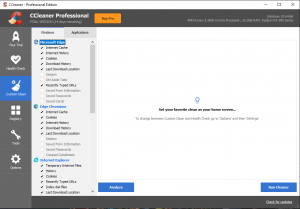More TV viewers ‘catching up’ online
By MICHAEL BYRNE
AUSTRALIANS are turning to TV-network webcasting, or ‘catch up TV’ as a safe alternative to illegal file sharing, says Bruce Arnold of Caslon Analytics.
The technology, which allows users to watch their favourite programs online after they have aired on television, is gaining popularity, as higher bandwidth connections are made available.
Foxtel’s Corporate Affairs Director Adam Suckling says the rise of webcasting shows media companies are embracing technology as opposed to fighting it.
“All media companies are very aware of what the music industry did and didn’t do right,” he said.
“[Webcasting] is legal and ensures copyright holders get paid, because people aren’t resorting to stealing other’s creativity.”
“If you can get good quality content for free from a broadcaster’s site, why would you want to go to Bit Torrent… where there’s always a possibility you might get something you didn’t ask for?” Mr Arnold said.
He refers to claims from Australian Federation Against Copyright Theft that users who attempt to download TV shows illegally off peer-to-peer networks can end up with viruses and pornography instead.
In one extreme example, AFACT claimed the file-sharing network Limewire was offering pornographic videos under the guise of The Wiggles or Hi-5 episodes However, Mr Arnold says the webcasting is only an element to fighting the problem.
“It’s a building block rather than the final solution,” he said.
“It can’t fully compete with Bit Torrent technology because you don’t have long term access to an archive.”
Broadcasters are aiming their services to those who want to catch up on recently missed programming, providing legitimate copies of shows with advertising and copyright holders’ control still intact.
The public broadcasters have been the most enthusiastic webcasters so far.
The ABC’s iView service delivers over 400 episodes and has about 70 hours of content uploaded each week.
In June 2009, the service averaged 631,000 visits a month.
While the commercial networks are struggling to reconcile the technology with their business model, they are beginning to catch up.
Earlier this year the Seven Network introduced its Plus7 service, which saw over 500,000 visits in its last month.
Seven’s service is funded by banner advertising and single ads during the programs breaks. They are set to increase advertising as the service advances.
Even though the outlook seems good for the emerging medium, broadcasters are only treating it as a compliment to their main services.
“[It’s] really part of the whole package… allowing people to watch what they want when they want to,” said Mr Suckling of Foxtel’s Download service.
The Foxtel Download service allows users to download movies and TV shows in a format only compatible with Foxtel’s ‘Download Player’ software. The files have Digital Rights Management (DRM) software which, after a pre-determined date become unwatchable.
The same method was employed by Channel Nine’s poorly received and now defunct Catchup TV service.
Mr Arnold casts doubt on this mode of delivery saying DRM software is often frowned upon in the IT community.
“The response of IT enthusiasts is often to defeat the protection mechanisms,” he said.
Regardless, tech website Gizmodo has praised Foxtel’s service for its comprehensiveness, providing over 400 hours of programming.
Mr Suckling was unable to provide figures but said the Foxtel Download service is being received ‘very well’.
“We’ve had a significant number of people sign up for the service and use it each day,” he said.
However, a lot of the service’s shortcomings do come from the restrictive software – for example, Foxtel’s Download Player will not run on Mac-OSX.
Whatever flaws are broadcaster’s webcasting services, they are set to become more popular with the rollout of the National Broadband Network.





Be the first to comment!